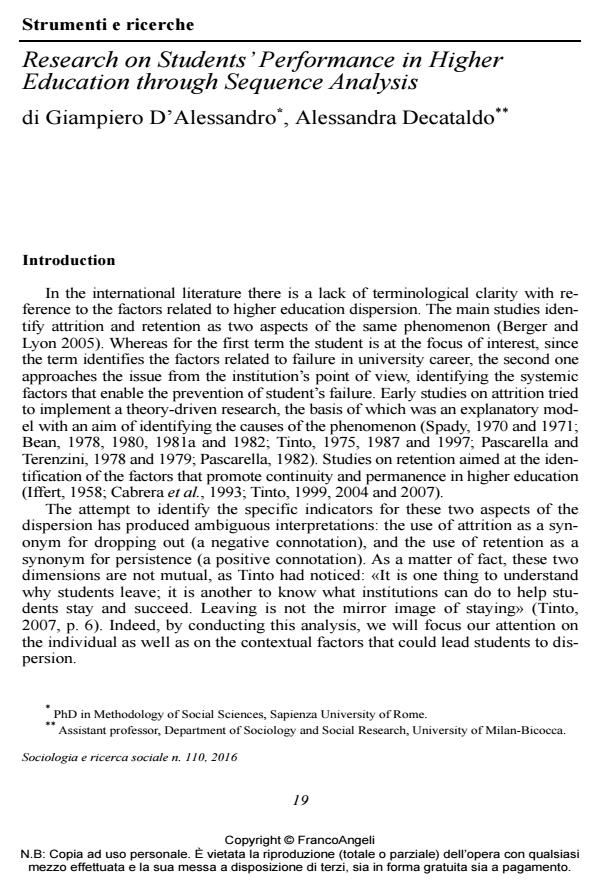Research on Students’ Performance in Higher Education through Sequence Analysis
Titolo Rivista SOCIOLOGIA E RICERCA SOCIALE
Autori/Curatori Giampiero D'Alessandro, Alessandra Decataldo
Anno di pubblicazione 2016 Fascicolo 2016/110
Lingua Inglese Numero pagine 22 P. 19-40 Dimensione file 2009 KB
DOI 10.3280/SR2016-110003
Il DOI è il codice a barre della proprietà intellettuale: per saperne di più
clicca qui
Qui sotto puoi vedere in anteprima la prima pagina di questo articolo.
Se questo articolo ti interessa, lo puoi acquistare (e scaricare in formato pdf) seguendo le facili indicazioni per acquistare il download credit. Acquista Download Credits per scaricare questo Articolo in formato PDF

FrancoAngeli è membro della Publishers International Linking Association, Inc (PILA)associazione indipendente e non profit per facilitare (attraverso i servizi tecnologici implementati da CrossRef.org) l’accesso degli studiosi ai contenuti digitali nelle pubblicazioni professionali e scientifiche
This paper aims to prove how adequate the Sequence Analysis’ tools are in the study of the complexity of the Italian higher education system. Indeed, this system has been strongly challenged by dispersion in its main aspects: (1) low number of graduates; (2) excessively long university careers; (3) very high number of drop outs. Through longitudinal administrative data of a cohort of students enrolled at Sapienza University of Rome, the Sequence Analysis allows: (1) to describe the phenomena of late graduation and delayed performance; (2) to identify different types of students dropping out; (3) evaluation of other particular phenomena that can delay the students’ career. Through this analysis, we will focus our attention on individual as well as on contextual factors because we assume that: «It is one thing to understand why students leave; it is another to know what institutions can do to help students stay and succeed » (Tinto 2007, p. 6).
Giampiero D'Alessandro, Alessandra Decataldo, Research on Students’ Performance in Higher Education through Sequence Analysis in "SOCIOLOGIA E RICERCA SOCIALE " 110/2016, pp 19-40, DOI: 10.3280/SR2016-110003